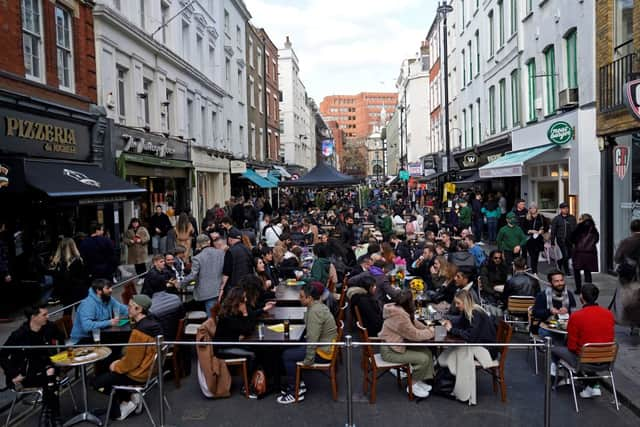London's population bounces back after Covid-19 pandemic exodus
and live on Freeview channel 276
Four years after thousands of Londoners fled the city as the Covid-19 pandemic took hold, population figures have risen to their previous levels, new research suggests.
The Centre for Cities (CfC) found that London’s population fell by 75,500 between mid-2019 and mid-2021, a decline of 0.7% - the population of Tunbridge Wells.
Advertisement
Hide AdAdvertisement
Hide AdFigures for 2023 have not yet been published but the think tank says that with an additional 66,000 people in London in 2022, the figure will now be back past pre-pandemic levels.
The decline was driven by numbers of the people leaving London for elsewhere in the country, while the resurgence was driven by international migration.
In its new briefing - Escape to the Country? How Covid changed London’s population - CfC suggests the rise in people leaving the capital was relatively modest and an "amplification of well-established trends".
Andrew Carter, chief executive of Centre for Cities, said: “While there was a ‘race for space’ during the pandemic, this data shows it to have been short lived. The population dip during Covid was considerably smaller than the figures in the hundreds of thousands that some predicted.
Advertisement
Hide AdAdvertisement
Hide Ad“The big challenges associated with London remain. London’s infrastructure is creaking under the weight of its population. Policymakers have to shake off any assumption that population changes mean questions over the housing shortage and infrastructure will solve themselves. Nor will smaller, less affluent places see huge influxes of professional workers with greater spending power.
“There are big decisions to make like continuing to invest in the public transport network, for example the Bakerloo Line extension and Crossrail 2, so that people can get around. Delays to big infrastructure projects and housing delivery will constrain London’s potential.”


Figures for population flows between London and the rest of England and Wales show a net 191,000 people left London in 2020-21, up from an average of 103,000 in the five years before the pandemic.
Advertisement
Hide AdAdvertisement
Hide AdThose aged between 30 and 45 were most likely to leave, as was the case before the pandemic. However, people leaving were more likely to be childless than before 2020.
Those who left continued to move to places a commute away from London or elsewhere in the Greater South East. 58% of people moved to the South East or East regions of England, the same proportion as before the pandemic hit.
In a "race for space" during Covid, people were more likely to move to a rural location in the Greater South East than was the case previously, but this trend appeared to have fallen back from its 2020/21 peak in 2021/22.
For some inner London boroughs, such as Camden and Tower Hamlets, population inflows have since exceeded their pre-pandemic average. Rising rents suggest that the demand to live in the capital has continued to increase.
Comment Guidelines
National World encourages reader discussion on our stories. User feedback, insights and back-and-forth exchanges add a rich layer of context to reporting. Please review our Community Guidelines before commenting.
